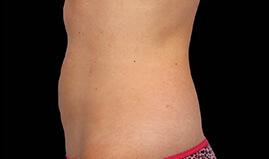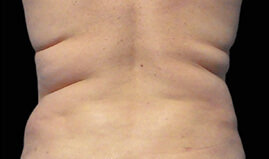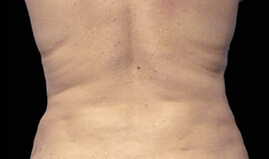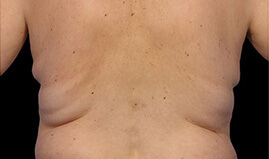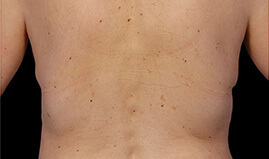How Does CoolSculpting Work?
Striving to provide the best CoolSculpting Houston, TX

Without a doubt, the most popular fat-busting phenomenon these days is CoolSculpting — and with good reason. This cool procedure (pun intended) is not only effective, but it’s cheaper and safer than surgery, and requires absolutely no downtime.
All of these positives make cryolipolysis (the clinical term) an excellent option for those still struggling with trouble spots, even after losing a lot of weight, eating well, and exercising regularly.
Unsurprisingly, celebrities are even getting in on CoolSculpting. Will & Grace star Debra Messing and reality TV mainstay Khloe Kardashian have both sung its praises, saying they’ve tried it in the past and they’d do it again.
You may have heard a lot about CoolSculpting (the name seems to be everywhere), but you might not actually know how it works, nor why people seem to love it so much. Well, once you understand the how, you’ll probably understand the why more easily. Spoiler alert: It’s pretty fascinating.
Contents
How Does CoolSculpting Work?
Believe it or not, the idea for CoolSculpting (which is the most popular brand of cryolipolysis machines) was borne out of an interesting observation by two Harvard University scientists, Dieter Manstein, MD, PhD, and R. Rox Anderson, MD. They realized that children who ate lots of popsicles sometimes developed an inflammatory condition called Popsicle Panniculitis. And when the condition resolved the children often developed dimples.
That’s right — sweet little, lovable dimples in children’s cheeks are what gave rise to what would become quite possibly the biggest revelation in fat reduction treatments in history.
Based on this observation, Drs. Manstein and Anderson began researching the effect of cold temperatures on subcutaneous fat cells. What they found was that the fat cells present were more sensitive to the cold than the surrounding tissue.
So the theory was that they should be able to target fat cells without doing any harm to other tissue, like skin cells, internal organs, veins, or arteries. (And of course, they were right.)
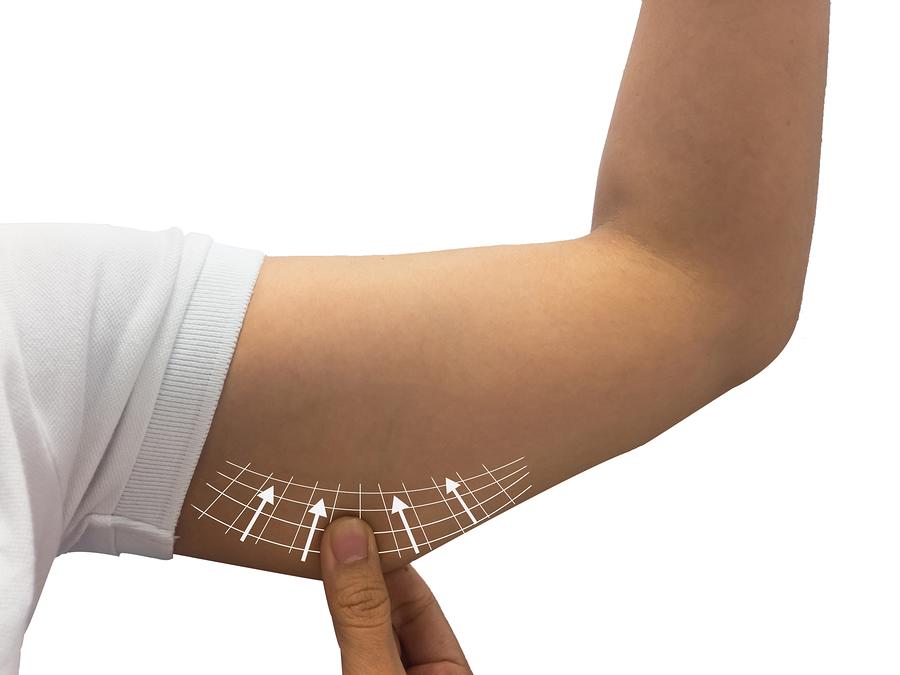
Perhaps the most important piece of information here — the one that makes CoolSculpting actually work, but remain a safe procedure with so few side effects — is that the temperature at which fat freezes is higher than the temperature at which water freezes. It’s not a massive difference: just 7 degrees Fahrenheit (water at 32 versus fat at 39) or 4 degrees Celsius (water at 0 and fat at 4).
As a result, the CoolSculpting procedure actually kills the targeted fat cells by freezing them to death. After that, your body will process the lipids out through the lymphatic system, the same way you’d process any other kind of dead cell (which is completely normal and natural — our cells die and new ones form every day). It’s remarkably simple, which contributes in many ways to the revolutionary nature of this procedure.
Because the breakdown of fat cells doesn’t occur instantaneously, clients should not expect to leave the office a size smaller. This process actually takes weeks (if not months), so most clients notice the biggest difference two or three months after the procedure, when their bodies have had time to get rid of the dead cells.
However, contrary to some of the promises CoolSculpting clinics will make, clients should not expect weight loss to be one of the differences they see. It seems logical that freezing and killing fat cells should result in weight loss because fat has mass, but that’s simply not the case.
What most people don’t realize about weight loss is that it has nothing to do with the number of fat cells in our bodies. In fact, we have about the same number of fat cells (wherever our bodies want to store them, much to our chagrin) from adolescence to the end of our lives. When we lose weight, the cells shrink. When we gain weight, they expand. Therefore, getting rid of fat cells doesn’t actually make us lose weight.
If you’re considering CoolSculpting, it’s important to remember that it’s not a weight loss procedure — it’s a fat freezing and reduction procedure. Clients can expect their clothes to fit differently, but they shouldn’t expect to actually lose weight.
What’s the Procedure Like?
If you go in for a CoolSculpting procedure, a trained clinician will place an applicator connected to the machine in the area you’ve elected to treat. When the machine is turned on, it essentially suction cups itself to your skin and goes to work freezing the fat cells underneath the skin.
The process typically takes about an hour per treatment area, during which the client (or at least the part of the client being treated) must remain relatively still so the machine doesn’t dislodge, but is completely awake and able to entertain him or herself.
Clients can read, play games on their phones or tablet, or maybe even get some work done. When it’s over, the clinician will remove the applicator and that’s basically it.
Because CoolSculpting isn’t surgical and no damage is being done to vital, healthy tissue, clients are allowed to leave shortly after the procedure is over. One of the reasons CoolSculpting is so popular is that there’s little to no downtime. You could head to work right after your treatment or even go to the gym.
Does CoolSculpting Hurt?
Everyone’s CoolSculpting experience will vary and people have different levels of pain tolerance, but for the most part, cryolipolysis shouldn’t hurt.
Some people report mild discomfort during the procedure but the actual CoolSculpting process should not be painful.

In the days following the procedure, many people experience soreness, swelling, redness, sensitivity, numbness, or bruising in the treatment area. These are relatively minor and temporary side effects that sometimes arise after cryolipolysis and will disappear on their own without any additional treatment. Ironically, some clients report that ice helps alleviate any soreness or swelling they do experience.
If you undergo a CoolSculpting procedure and experience severe, persistent side effects, you should notify your doctor immediately. But for the most part, you can rest assured that complications are quite rare (and minor) with cryolipolysis treatments.
According to a 2015 review of the safety and efficacy of the procedure, less than one percent of a pool of 1,445 CoolSculpting clients experienced complications.
The most commonly reported side effect was numbness in the treatment area that exceeded a period of one month. And not a single case in this study resulted in more serious complications like bleeding, scarring or permanent numbness or skin discolorations.
Does CoolSculpting Actually Work?
CoolSculpting has been proven time and time again to be an effective way to reduce fatty pockets by freezing the fat in the targeted area with very few side effects. Each time, peer-reviewed research papers and subsequent studies have confirmed what cryolipolysis clients already knew: that the fat pockets on treated areas indeed decrease.
A scientific review conducted in 2015 of 19 cryolipolysis studies found that the amount of fat lost in clients who received CoolSculpting treatments was similar across different fat measurement methods. Using calipers, fat reduction ranged from 14.67 percent to 28.5 percent, while an ultrasound found a slightly lower range, 10.3 percent to 25.5 percent.
Another review conducted in 2015 (the same one that determined how rare complications were) looked at 16 cryolipolysis studies and concluded the average fat reduction in CoolSculpting clients was 19.55 percent nearly four months after the procedure.
Furthermore, researchers can actually detect an enzyme called caspase in fat cells that have been treated with CoolSculpting.
The presence of caspase is important because it proves that apoptosis (the process of a cell dying) has begun and that death is inevitable. Pathologists even refer to caspase as “the executioner” enzyme because it’s always associated with apoptotic cell death.

As with any other medical procedure, everyone experiences the effects differently because every person’s body is different. One study, conducted in part by cryolipolysis co-inventor Dr. R. Rox Anderson, found an isolated case of paradoxical adipose hyperplasia (PAH), which causes the dying cells to expand, rather than be broken down by the body as one would expect.
This would cause the client to actually see the treatment area get bigger, as opposed to smaller and can typically be diagnosed about 6 months after the treatment. However, PAH is extremely rare and is believed to occur in less than only 0.01 percent of people who try CoolSculpting.
The truth is that the vast majority of people see a decrease in fat in the treatment area and experience little to no side effects. Of course, some may experience more side effects than others, and some may see more drastic reductions in fat than others.
Regardless, CoolSculpting will not result in a complete and total loss of fat in any treated area. Again, cryolipolysis is a fat freezing and reduction procedure, but it’s not a miracle cure for unwanted fat. In addition, everyone has at least a little bit of fat on their bodies — even supermodels.
CoolSculpting is best suited for people who are already near their target weight, but are struggling to get rid of stubborn fat pockets.
The fat needs to be “pinchable,” meaning that it can lift up from the body — hard fat deposits are not ideal for cryolipolysis. The most frequent treatment areas are the stomach, love handles, thighs, arms, hips, and more recently (thanks to FDA approval of a smaller applicator), the area under the chin.
For best results with CoolSculpting, clients should continue with their regular exercise regimen in addition to eating a healthy, well-balanced diet. Cryolipolysis will freeze up to 25% of the fat cells in the areas treated, but it will not prevent the remaining fat cells from growing. So if you stop exercising, abandon vegetables, and eat french fries at every meal, you’ll completely negate any positive effects you would have otherwise seen from the procedure.
Should I Get CoolSculpting?
If you’re considering CoolSculpting, you should schedule a consultation with a clinician first. This trained, certified professional will be able to help you determine if you’re a good candidate for cryolipolysis or not.
As previously mentioned, ideal candidates are close to their goal weight, eat in a healthy manner, and exercise regularly, but are still struggling to get rid of their love handles, the extra bulge below the belly button, or have leftover underarm fat after weight loss.
Women who are pregnant or nursing should not undergo CoolSculpting treatments because the effects to a fetus and to breastmilk are unknown.
If you do decide to move forward, make sure you choose clinicians that want to provide you with the best CoolSculpting experience possible.
At DaVinci Body Sculpting, we perform CoolSculpting every single day — in fact, it’s all we do. Regardless of your goals, we’re confident we can help you achieve them. Give us a call and let us know what you want to accomplish this year!

